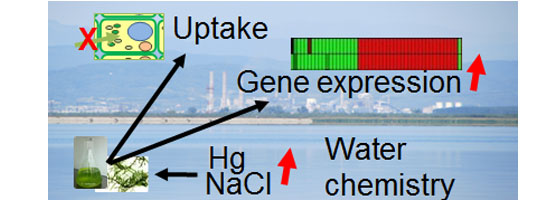Transcriptomic is promising as an early-warning tool to assess water quality degradation

Water quality degradation is a worldwide problem, but risk evaluation of chronic pollution in-situ is still a challenge. The present study evaluated the potential of transcriptomic analyses in representative aquatic primary producers to assess the impact of environmental pollution in-situ: the microalga Chlamydomonas reinhardtii and the macrophyte Elodea nuttallii were exposed 2h the Babeni Reservoir of the Olt River impacted by chlor-alkali plant effluent release resulting in increased concentrations of Hg and NaCl in receiving water. Transcriptomic response provided a sensitive measurement of the exposure as well as hints on the tolerance mechanisms of environmental pollution, and is thus promising as an early-warning tool to assess water quality degradation.
Dranguet, P., Cosio, C., Le Faucheur, S., Beauvais-Flueck, R., Freiburghaus, A., Worms, I., Petit, B., Civic, N., Docquier, M., and Slaveykova, V., 2017, Transcriptomic approach for assessment of the impact on microalga and macrophyte of in-situ exposure in river sites contaminated by chlor-alkali plant effluents: Water Research, v. 121, p. 86-94.
3 Jun 2017